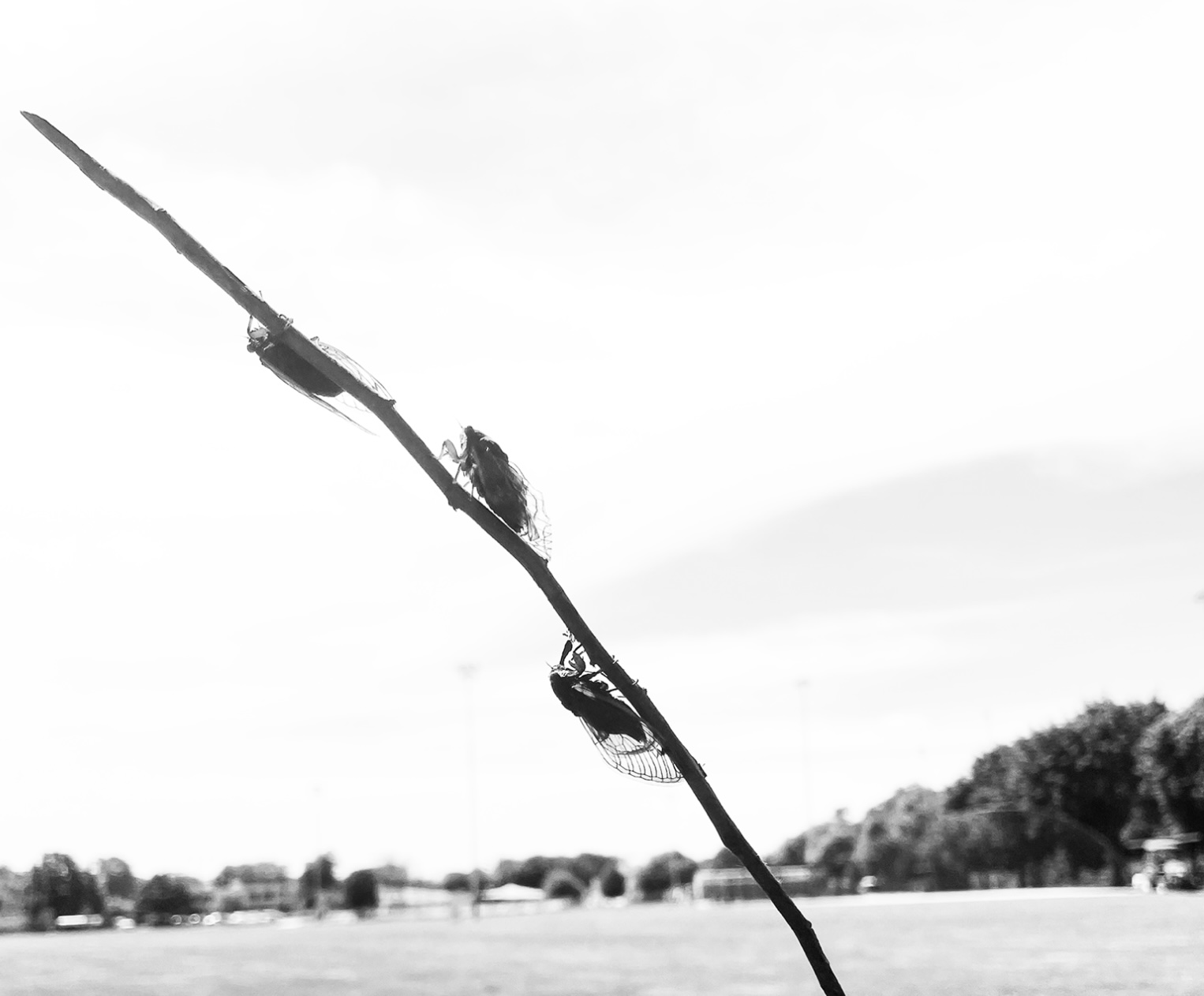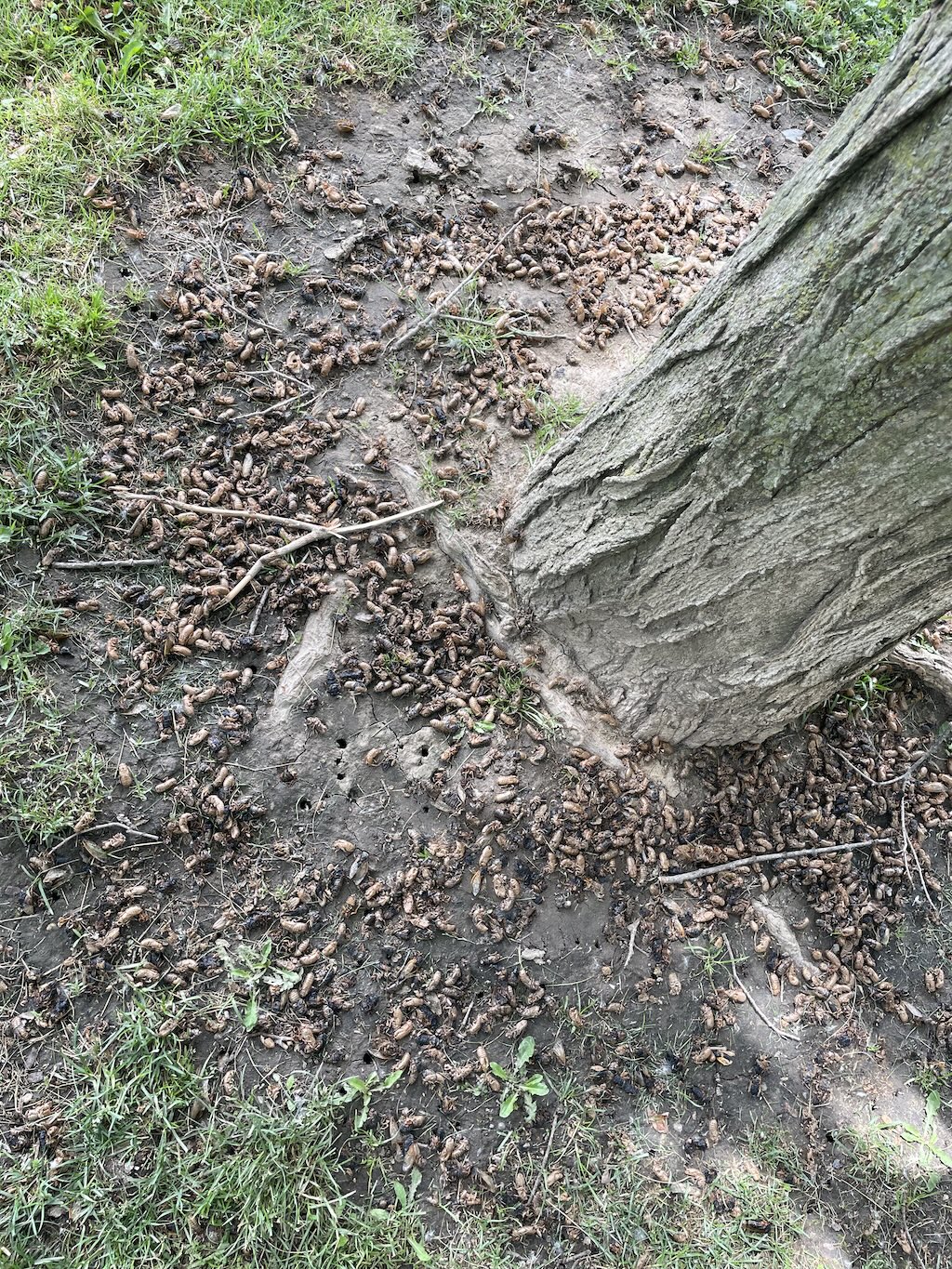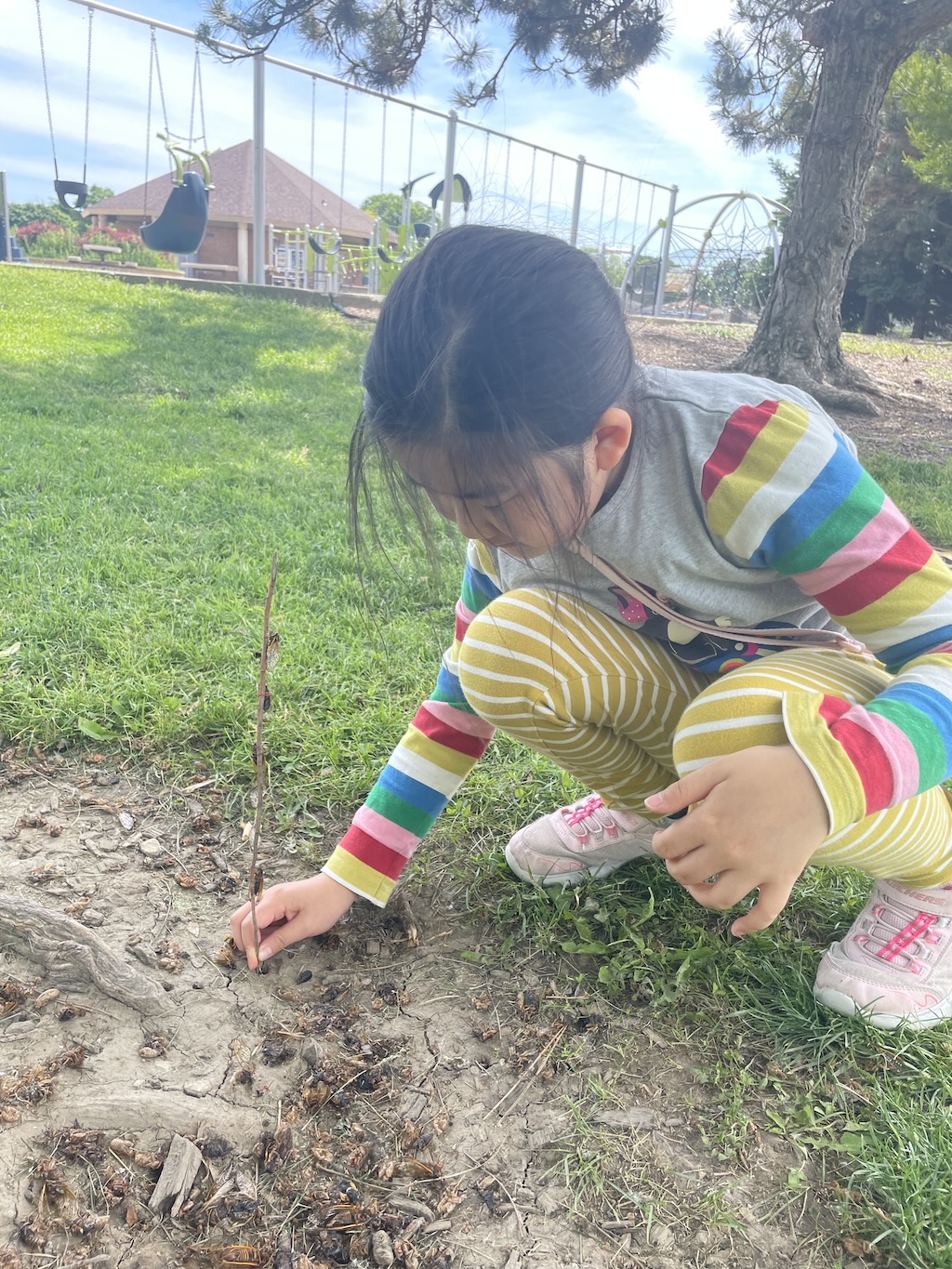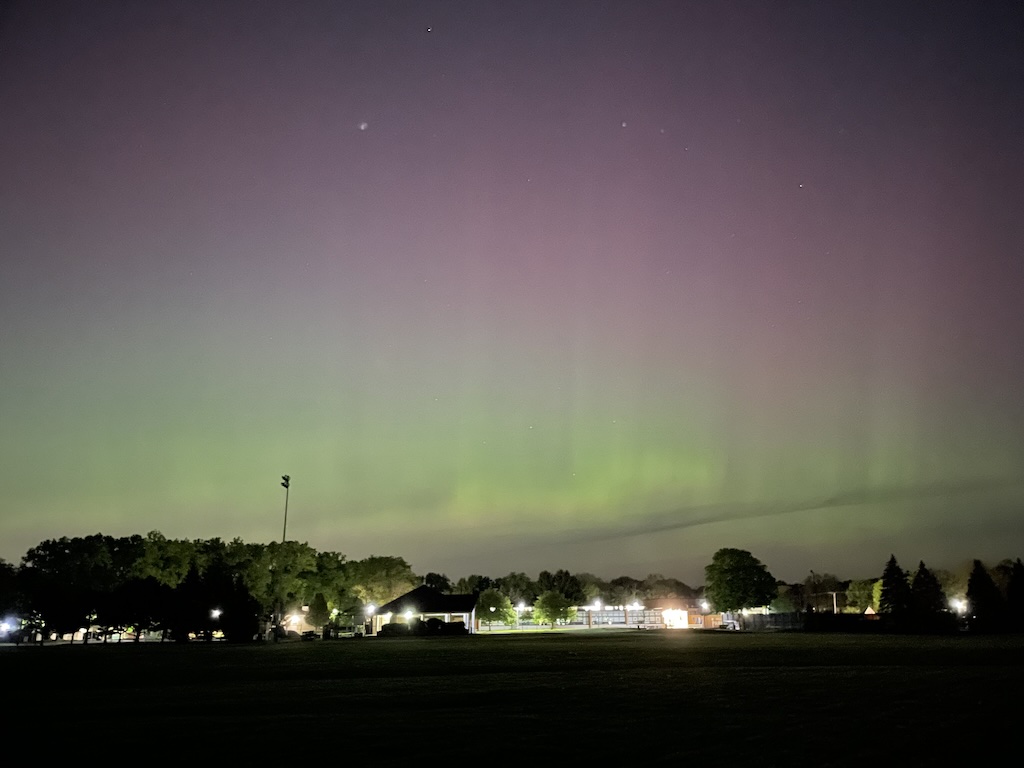
바이올린과 피아노를 위한, "순환(매미)의 나무"
I. Every black is an infinity of colors (The ascension hole)
II. The song sparrow and a trillion impossible questions
III. Interplanetary lightstorm-blossoms
IV. Kinderszenen: The whole world is a playground
David Kalhoous, piano
March 14, 2025, Skowronski Music Hall, Loyola University Chicago
Dedicated in gratitude and admiration to and premiered by Benjamin Sung and David Kalhous
Duration: ca. 19 minutes
–J.L. Borges, from Three Versions of Judas
Program notes
In the summer of 2024, I encountered two extremely rare phenomena in the same month. That year, two different types of cicadas simultaneously emerged in Illinois. Theoretically, this can happen every 221 years, when the cycles of the two prime numbers coincide:
Brood XIII, the Northern Illinois Brood, hatched and burrowed into the ground 17 years ago, in 2007. Brood XIX, the Great Southern Brood, hatched in 2011 and has spent 13 years underground, sipping sap from tree roots.[…] This spring the two broods will surface together, and are expected to cover a similar range. Up to a trillion cicadas will rise from the warming ground to molt, sing, mate, lay eggs and die. – Jonathan Corum, Maps of Two Cicada Broods, Reunited After 221 Years (New York Times, May 2, 2024)
One day, my daughter asked to visit the “cicada” trees at her school and I thought it was an excellent idea for her to do some nature exploration activities. When I arrived at her school, I was absolutely mesmerized by the unreal, colossal scale of the scene. I saw countless dead cicadas covering the tree stumps, some hung on the trees while thousands on the ground like piles of sand. From time to time, I could hear the snapping sounds of birds shredding or tearing cicadas apart. Abandoned wings on the ground gave the impression that birds enjoyed these snacks like potato chips, eating the bodies and discarding the plastic bag.
My daughter played with the cicadas, placing some on her shoulder or palms to watch them crawl, throwing some to see if they soar before hitting the ground, and even petting them with adorable eyes. The sight of the trees with thousands of holes where cicadas emerged from years of underground slumber, piles of living and dead cicadas with their cocoons, desperately flying cicadas chased by birds, my daughter playing among them by the playground, imprinted a philosophical question: A Buddhist zen question about the meaning and the origin of life. This was on May 31st 2024.
Three weeks before our cicada adventure, there was another rare event. A massive series of solar storms in early May, caused by three coronal mass ejections from the sun, made the northern lights visible in many areas of the northern hemisphere (Kp index of 9 out of 10 – likelihood that the aurora will be visible.) After missing this celestial show on May 10th, my family tried to watch it again the following night with many of our fussy Chicago neighbors. At 11 PM, after dropping off my other family members at home following an exhausting and unfruitful night-chase, I finally set up my base camp at the park near my daughter’s school, right by the cicada playground. Miraculously, around 11:30 PM, I glimpsed about two minutes of the Northern Lights—a cosmic image that I had never encountered before. While writing the piece, I realized that the cicadas might have seen the same celestial fireworks, which inspired the third movement.
The title The Ci(r)cadian Tree reflects the circular daily lives of a trillion cicadas. They emerge in the morning from the holes under their mother trees after the longest and darkest waiting, with some being eaten by predators in the afternoon while others survive. (The original title of second movement was Duel: Sing-Song sparrow sharpshreds snapping snacks.) In the early evening, they hear probably the only song during their lifetime from the playground from children, and at night, those that succeed to reproduce might enjoy the beautiful Northern Lights. Ci(r)cadian Tree is commissioned by Benjamin Sung and David Kalhous and dedicated to them with deepest admiration. It is premiered in February 2025 at Loyola University Chicago.
 |  |
 |  |
 |
 |


